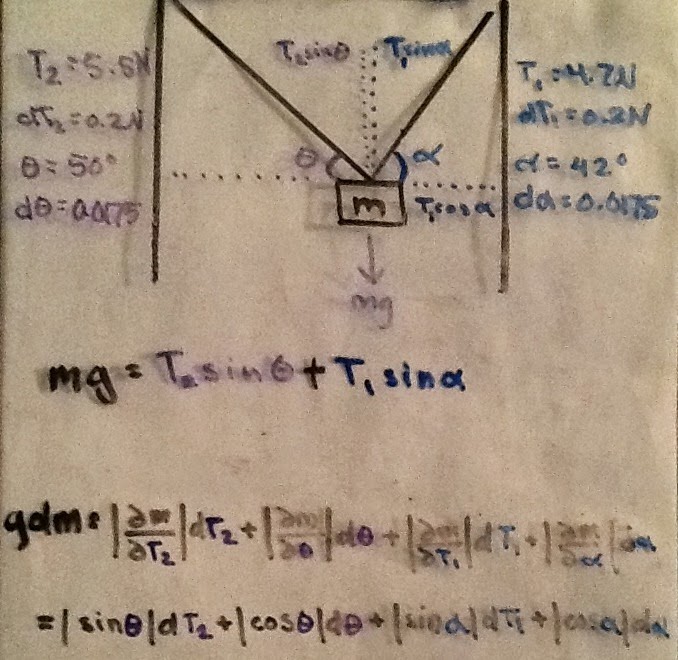Propagated Uncertainty
Purpose
In this lab we had to find the propagated uncertainties for the density of three cylinder metals and for hanging masses.
Part 1. Measuring the density of Metal Cylinders
What we used:
- metal cylinders (brass, aluminum, and bronze)
- vernier caliper
- scale
 |
| This is a vernier caliper measuring the diameter of a metal cylinder |
- the diameter and height of each cylinder was measured in cm
- the weight of the cylinders are measured in grams
- density was calculated for each metal
Data:
 |
| This is how we solved the equation of propagated uncertainty (dP) for density |
 | ||
| This is the data table with the calculated numbers to get the propagated uncertainty in density |
So, for the first part of the lab, we found the density and the propagated uncertainty for each metal cylinder.
For copper: 9.08 g/cm^3 + 0.18 g/cm^3
for aluminum: 2.71 g/cm^3 + 0.06 g/cm^3
For brass: 8.41 g/cm^3 + 0.13 g/cm^3
Part 2. Determination of an unknown mass.
What we used:- angle reader
- we took measurements of the lab set up for the hanging mass
- we measured the tensions and the angles
 |
| This is the set up for the hanging mass |
Data:
 |
| This is the data that was collected from the set up of the unknown hanging mass |
Calculations:
 |
| This is how we found the equations for the unknown hanging mass and the propagated uncertainty (dm) for mass |
 |
| This is the propagated uncertainty for the hanging mass |
We found that the hanging mass was 0.75 kg and the propagated uncertainty was 0.032 kg.
So, the hanging mass is 0.75 kg + 0.032 kg.
Conclusion
In this lab we learned how to find the propagated uncertainties by taking partial derivatives. We were able to find the propagated uncertainties of density for 3 metal cylinders and that of a hanging mass.When we compare our calculated densities along with the propagated uncertainty, our answers come close to the actual densities of the metals.


No comments:
Post a Comment